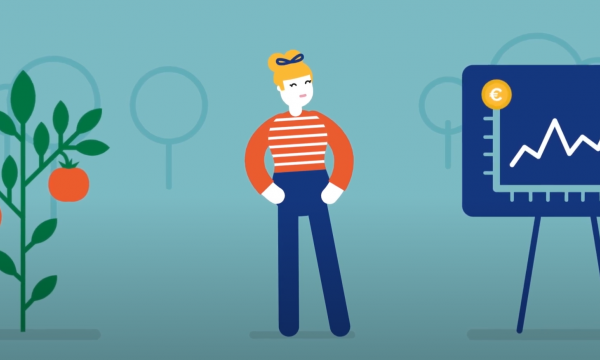Press release 'Computing' with plants - new sensor platform and technique from computer science successfully used to 'quantify' plant behavior
Suppose you could map the reaction of plants to their environment numerically, as you can with robots and computers. Then you would more quickly gain insight into the underlying processes that determine that behavior and how to control them. The ILVO-UGent doctoral researcher Olivier Pieters has taken the first step in this direction. As the first in plant sciences, he succeeded in applying the 'Physical Reservoir Computing' framework from computer science to plants, which allows you to calculate, simulate and predict their behavior and environment. The method is still in its infancy, but thanks to the development of a suitable sensor platform that is now being further expanded, new avenues of research are opening up rapidly. "Certainly for breeding, but in the long term also for precision agriculture and closed production systems such as in greenhouse horticulture, a lot of future applications can be imagined," says ILVO-UGent researcher Olivier Pieters.

Plants respond to their environment in complex but predictable ways
Plants respond to their environment and adapt themselves to achieve a particular goal. For example, a plant may stretch beyond a shady spot to get as much sun on its leaves as possible. Behind it, a complex system takes effect in the plant, but despite that complexity, its response to the situation of "shade" is fairly predictable.
This predictability offers perspectives for 'calculating' plant behavior. ILVO-UGent researcher Olivier Pieters placed leaf thickness sensors and cameras on strawberry plants (see photo) and developed a sensor platform with associated hardware and software that was accurate enough to effectively measure environmental variables and plant characteristics (leaf thickness and leaf elongation). He then successfully applied Physical Reservoir Computing (PRC) to his plant data.
Physical Reservoir Computing
PRC comes from computer science and is used, among other things, to allow a robot to adjust its movements in real time in response to visual stimuli. At first glance, a plant seems more "simple" than a robot, but especially in this context, this is not true. For example, a plant does not always react exactly the same to a stimulus; its behavior also varies depending on other factors such as age and season. After all, unlike a robot body, plants change regularly. Just think of leaves budding in the spring and withering away in the fall. That makes it difficult for PRC, because that method assumes that responses and memory do not change over time.
First steps taken, follow-up research needed and already started
For these reasons, Pieters only did research with fully grown plants, for just one week. But he effectively managed to use PRC and the new sensor network to calculate characteristics such as leaf thickness from a measured plant back to the (complex) interaction between the plant and its environment, such as light intensity but also humidity and photosynthesis rate.
This research into PRC in plants is exploratory, but can certainly be called pioneering. Professor wyffels: "This PhD is a good example of strong interdisciplinary research in which a concept from the computer sciences is tested on plants. As a result, we came to new insights in no fewer than three domains: computer science, electrical engineering and plant physiology."
Pieters and his colleagues are now going to work with the developed platform and some other sensor technologies (also non-contact) to see how efficiently they can map plant characteristics for different plant species. The aim is to be able to monitor as many characteristics as possible in a user-friendly way.
Interesting application possibilities
Olivier Pieters: "This innovation is actually changing our view of plants: from an organism that undergoes changes in the environment (passive) to an organism that processes information (active). The beauty is that PRC allows the response of plants to be approached in a uniform way. This allows all plant processes to be studied in a similar way, which is interesting for breeders. In the long term, it could also be interesting for precision agriculture, which relies on a lot of data, and even for greenhouse horticulture with controlled climate. For example, a plant could even actively control its own (micro) climate in the greenhouse using PRC."
Olivier Pieters defended his PhD 'Reservoir computing with plants' on February 8. Supervisors are Prof. Francis wyffels and Dr. ir. Michiel Stock of Ghent University, and Dr. ir. Tom De Swaef of ILVO.


